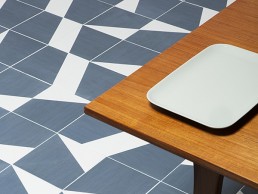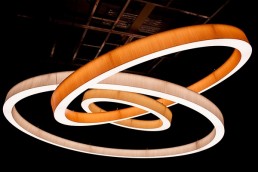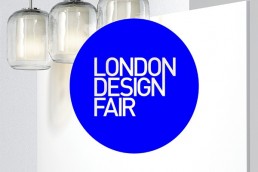Mutina’s Puzzle to debut in Milan
Experimentation with geometry, colour, patterns and versatility of use, form the inspiration behind the new Puzzle and Mistral tile collections designed by Edward Barber and Jay Osgerby for Mutina.
Puzzle was created by experimenting with simple geometric forms. Edward Barber and Jay Osgerby made a series of physical models, which enabled them to research compositions and develop the exact layout of potential patterns on the tiles: Combining these forms with colour and tone has built a rich and dynamic collection.
Barber and Osgerby suggest that: “The Puzzle collection is a game with infinite outcomes. The simple geometric shapes become softer and more fluid as the puzzle grows, allowing patterns to ebb and flow. Objects emerge like maps, islands or clouds, with endless possible permutations, meaning that whenever Puzzle is used it will always be unique.”
The organic nature of this collection allows one to experiment with the patterns, forming new combinations that ultimately create an ever-expanding collection. Combining this with plain, solid coloured tiles varies the scale of the contrast and creates a moment of calm within the finished composition.
When exploring the formation of patterns, the two designers suggest that images begin to resemble an abstracted map, an idea that has inspired them to use European islands as a key reference point for the colours of the collection.
There are eight chromatic families in the Puzzle collection, each named after European islands. The neutral colours represent the Northern Isles of Faroe, Gotland, Aland, Anglesey and Skye and the warmer and brighter shades are associated with the Mediterranean Islands of Crete, Milos and Murano. Each of these families includes: a composition of six graphic patterns in three colours; a set of two symmetrical patterns in two colours called Edge; and three solid-colour variations.
As a counterpart to the Puzzle collection, Barber and Osgerby’s Mistral collection will also make its debut at the 2016 Salone del Mobile, playing with geometry, light and shade. The three dimensional tile can be used to build louvred walls or sunscreens that have a sculptural quality.
Both collections have been designed to be used indoors and outdoors, allowing the user to create their own unique domestic space due to the adaptable nature of the geometric design, patterns and colours.
Both collections are due to be exhibited at Salone del Mobile 2016, Milan.
Related Posts
30 May 2017
LA2 Connected makes UK debut
17 May 2016
London Design Fair debut
25 March 2015




